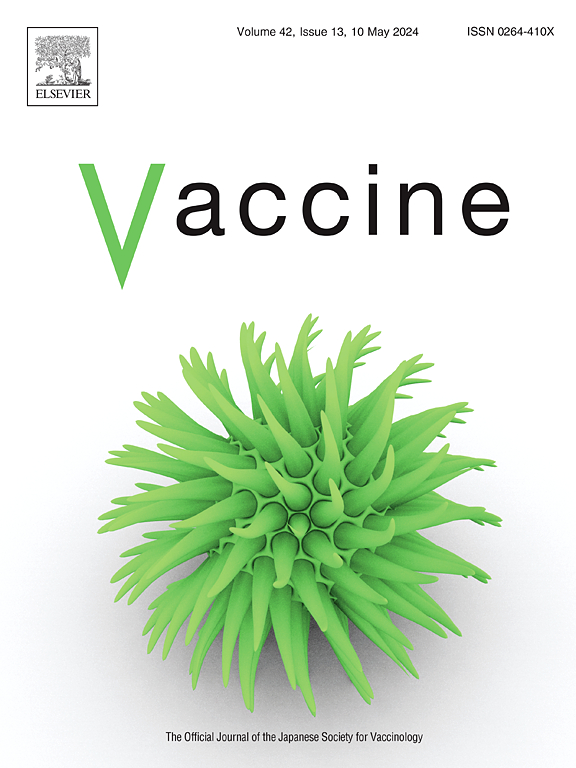Feasibility of cohort event monitoring and assessment of reactogenicity and adverse events among a cohort of AstraZeneca and Moderna COVID-19 vaccine recipients in Nigeria, 2021
IF 4.5
3区 医学
Q2 IMMUNOLOGY
引用次数: 0
Abstract
Background
To generate COVID-19 vaccine safety data in Nigeria, passive reporting was supplemented with cohort event monitoring (CEM), an active surveillance system. We described reactogenicity within 7 days and adverse events up to 3 months after each AstraZeneca or Moderna COVID-19 vaccine dose while assessing the feasibility of implementing CEM in a low- to middle-income country (LMIC) during a mass vaccination campaign.
Methods
Participants were aged ≥18 years with access to mobile phones who received the first dose of an authorized COVID-19 vaccine from participating health facilities in 6 states of Nigeria during September and October 2021. Data collectors interviewed participants via phone on days 0, 3, 7, and thereafter every 7 days for 3 months. The same schedule was restarted if a participant received a second vaccine dose. Proportions of participant-reported adverse events following COVID-19 vaccine receipt were calculated. Investigation and causality assessment were conducted on deaths using the World Health Organization causality guidelines.
Results
We enrolled 12,317 participants (AstraZeneca 6990; Moderna 5327); 6167/6990 (88.2 %) AstraZeneca and 4879/5327 (91.6 %) Moderna recipients completed a follow-up interview days 0–7 after the first dose; among them, 2685/6167 (43.5 %) AstraZeneca and 3533/4879 (72.4 %) Moderna recipients reported local reactions and 2456/6167 (39.8 %) AstraZeneca and 2087/4879 (42.8 %) Moderna recipients reported systemic reactions. Overall, 3891/6990 (55.7 %) AstraZeneca and 3978/5327 (72.8 %) Moderna recipients received a second dose of COVID-19 vaccine, among whom 897/3891 (23 %) AstraZeneca and 1979/3978 (49.7 %) Moderna recipients reported local reactions and 727/3891 (18.7 %) AstraZeneca and 1680/3978 (42.2 %) Moderna recipients reported systemic reactions. Among all enrolled, 11 died; there was no evidence to suggest any deaths were vaccine-related.
Conclusions
No unexpected patterns of adverse events were detected, providing additional data on the safety of these COVID-19 vaccines in Nigerian adults. We demonstrated that implementing CEM was feasible and may be valuable for safety monitoring of vaccines introduced in LMICs.
求助全文
约1分钟内获得全文
求助全文
来源期刊

Vaccine
医学-免疫学
CiteScore
8.70
自引率
5.50%
发文量
992
审稿时长
131 days
期刊介绍:
Vaccine is unique in publishing the highest quality science across all disciplines relevant to the field of vaccinology - all original article submissions across basic and clinical research, vaccine manufacturing, history, public policy, behavioral science and ethics, social sciences, safety, and many other related areas are welcomed. The submission categories as given in the Guide for Authors indicate where we receive the most papers. Papers outside these major areas are also welcome and authors are encouraged to contact us with specific questions.
 求助内容:
求助内容: 应助结果提醒方式:
应助结果提醒方式:


